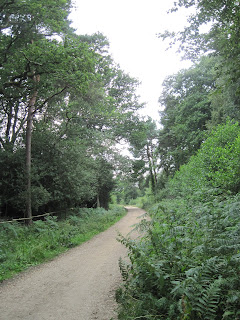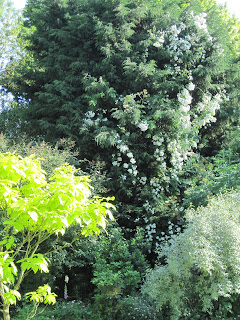
Last week, I left my job. "Early retirement", although I have a feeling that there will be nothing retiring about it! After thirteen good and productive years, the prospect of another year of metaphorically juggling too many balls gave me pause for thought. I have always loved teaching and may do some more one day, but I admit to finding it increasingly hard to combine a demanding, if part time, job with running what is effectively a small holding here in the Forest.
At home there are animals, garden, home and family commitments. Last winter was particularly difficult, when I was out caring for the animals in snow, ice and rain, morning and evening, and trying to fit in a full teaching day in the middle of it all. So, after suffering my second heavy cold of the winter, I made a decision. This summer would be the time to leave, so that I could rethink priorities, downshift a little and maybe find some time along the way to enjoy being more creative again. There is nothing like the prospect of writing structured reports and teaching targets to make one realise how the creative use of language can be pruned and snipped away at by years of working to a formula.
When the time came to leave, a sense of relief was mixed with sadness at leaving good friends behind. I shall stay in contact with close colleagues and I hope to watch from afar as my pupils of recent years continue to grow, learn and follow whatever path they choose. On my last working day, I walked around the school with my camera, capturing images of the building that has been a part of my life for so long.
My teaching rooms have always been in the oldest part of the school, which was once a quite grand country house built in late Victorian times. The family who built the old house had eclectic tastes and there are features of interior design from the Arts and Crafts movement, through to Art Nouveau and the early twentieth century. All around the house are fine old windows, where the stained glass designs still remain. There are large, heavy wooden doors, fireplaces with the original tiles and unusual features such as the round radiator at the bottom of the stairs. I have never seen another one like it.

A window of frosted glass with decorative borders. Now in part of a corridor, I wonder if this was once the window of a bathroom?

Outside, the original cast iron downpipes of the late nineteenth century guttering.

A Neo -Classical door wooden frame around one of the heavy doors into a downstairs room. The area around the entrance hall is decorative and rather grand. Obviously designed to impress visitors to the family.

Here is the round Victorian radiator at the foot of the stairs.

Looking down on the radiator from the first landing.

The old newel post where hundreds of children have started on the climb upstairs to their classrooms. This was my way up to work every day.

The landing, with windows of frosted glass. Secondary double glazing has been installed, both to keep in the heat and to protect the windows.

Decorative panelling under the staircase.

The original copper enamelled door furniture is still in place

In the old dining room is a large fireplace........

.....complete with original tiles.

Through the door into a beautiful room. When I first joined the school, this was the Headmaster`s Study. Staff meetings were held in here, at first break-time on a Monday. It was a formal affair, very different from the more democratic atmosphere of a present day meeting. This was once the library of the old house and the great, carved book case seen behind the door was apparently built to order for this room. It has been here ever since, and the room has recently been returned to its original use as a library.

The Arts and Crafts fireplace in the Library. The William Morris tiles and the wooden panelling are original.


Details of the tiles above the fire.............


.....and of the finely carved wooden panels.

The great bay window of the Library, with original leaded windows and stained glass, looks out onto a terraced garden and the playing fields.

Once a Victorian conservatory, the library extension has retained the stained glass of the original but has been converted into a beautiful room for quiet work and study.
The little attic room where I taught in recent years has, no doubt, a history of its own. It was once a bedroom where the house maids would have lived and slept. Under the eaves of the slate tiled roof, I have often imagined the young servant girls waking up in that room, exhausted from long hours of scrubbing, cleaning and polishing and having to face another long day keeping a large country house clean and serviced.
The small, cast iron fireplace is still there and the view from the window is still the same. Hot in the summer and cold in the winter, the room has an atmosphere of its own. Now my boxes of books and files have gone and my colleague and friend, who also retired this term, has left. The little attic room is empty once again and awaits September, when new teachers and other children will give it a purpose as another school year begins.




 A Silver Washed Fritillary alights on a bramble flower and opens its wings.
A Silver Washed Fritillary alights on a bramble flower and opens its wings.
























































